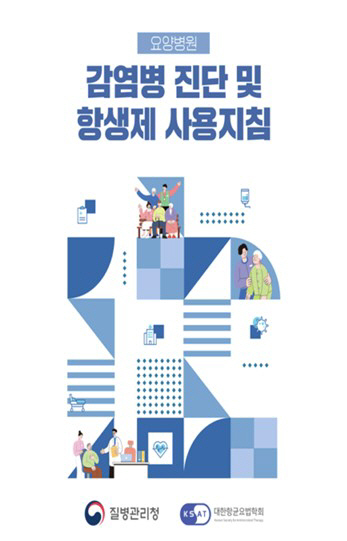The Korea Centers for Disease Control and Prevention and the Korean Antibacterial SystemLaw Society publishes guidelines for the use of antibiotics in nursing hospitals
Mar 27, 2025
|
According to a survey conducted by the Korea Centers for Disease Control and Prevention in 2023 on the use of antibiotics in domestic nursing hospitals (2020-2022), the use of antibiotics in nursing hospitals is higher than in acute hospitals, but the appropriateness of antibiotic prescriptions is low (35.2%), and efforts are needed to improve the proper use of antibiotics in nursing hospitals.
According to a survey of health insurance claims at that time, nursing hospitals used the highest amount of antibiotics per patient by type of medical institution nationwide from 2020 to 2022. 55.8% of hospitalized patients in nursing hospitals nationwide used antibiotics, 85.4% of patients using antibiotics were 65 years of age or older, and antibiotic use rose 28.1% in 2022 compared to 2020. 96.6% were prescribed for the treatment of infections, and the prescription adequacy for antibiotics prescribed for the purpose of treating infections was 35.2%. It was found that the reason for non-conformity with antibiotic prescription was mainly inappropriate for antibiotic selection (38.0%) and dose (43.9%), and the investigation found that the lack of guidelines for antibiotic use that can be easily applied in the field when prescribing antibiotics in nursing hospitals was the cause.
In a national survey of nursing hospital doctors, most medical staff responded that it is necessary to manage the proper use of antibiotics (88.7%) in nursing hospitals and develop customized guidelines for infectious diseases (84.9%) in nursing hospitals to improve the appropriateness of antibiotic prescriptions.
In response, the Korea Centers for Disease Control and Prevention has developed guidelines in the form of clinical pathways that include ▲ clinical symptoms, ▲ diagnostic tests, and ▲ empirical and therapeutic antibiotic selection for four types of diseases common in nursing hospitals (hospital acquisition pneumonia, urinary tract infection, skin soft tissue infection, and pressure ulcer infection), reflecting the characteristics of nursing hospitals that require integrated treatment of various infections, and published them as posters and brochures for medical staff at nursing hospitals to easily refer to them at the treatment site.
Ji Young-mi, Director of the Korea Centers for Disease Control and Prevention, said "This guideline is a simple and easy new form of guideline, and we expect it to serve as a guide for proper use of antibiotics."
This article was translated by Naver AI translator.














